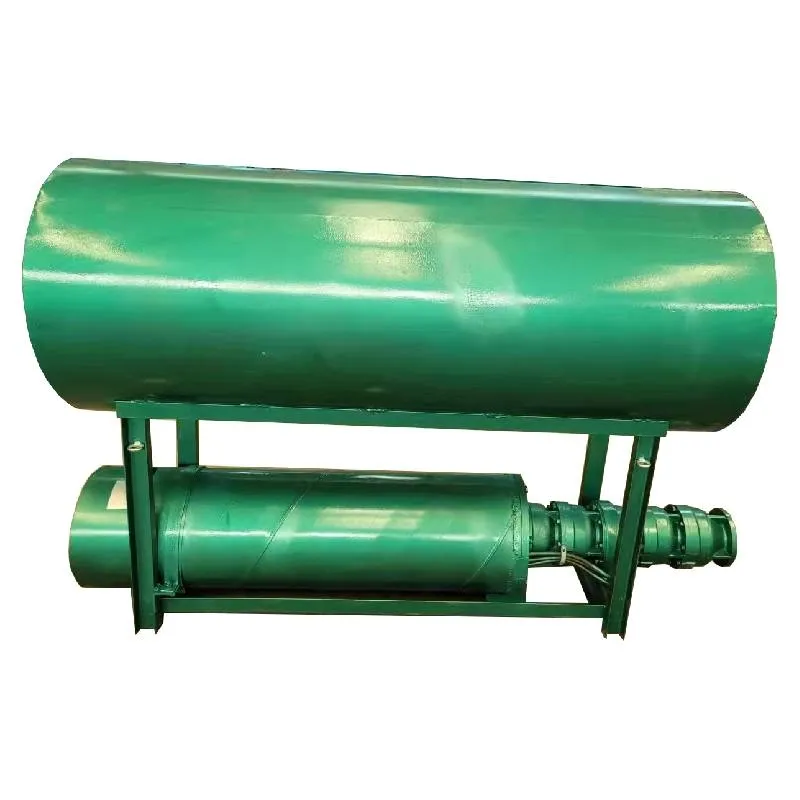Nov . 22, 2024 04:35 Back to list
troubleshooting submersible pump
Troubleshooting Submersible Pumps A Comprehensive Guide
Submersible pumps are essential devices used in various applications, from draining flooded basements to helping with irrigation in agricultural settings. When these pumps malfunction, prompt troubleshooting is crucial to minimize downtime and prevent further damage. This article will guide you through some common issues encountered with submersible pumps and how to address them.
1. Understanding the Components
Before troubleshooting, it is essential to familiarize yourself with the key components of a submersible pump. These typically include the motor, impeller, shaft, seal assembly, and discharge fitting. Knowing how these parts work together can help you identify where the problem may lie.
2. No Power to the Pump
One of the most common issues is a lack of power
. If the pump fails to start, check the following- Power Source Ensure that the pump is plugged in properly and that the circuit breaker hasn't tripped. - Control Switches Examine any floats or control switches for malfunction. If they are stuck, the pump will not receive the power it needs to operate. - Wiring Inspect all electrical connections for signs of wear, corrosion, or damage, as these can interrupt the power supply.
3. Pump Runs but Fails to Discharge Water
If your pump is operational but not discharging water, it may indicate a blockage or a mechanical failure
troubleshooting submersible pump

- Clogged Intake Check the intake screen or filter for debris. Often, debris can prevent water from entering the pump effectively. - Impeller Damage If the impeller is worn or damaged, it may fail to create the necessary pressure to discharge water. Inspect for cracks or signs of wear and replace if necessary. - Check Valves Ensure that any check valves in the discharge line are functioning correctly and not stuck closed, preventing water flow.
4. Overheating Issues
An overheating submersible pump is a serious concern that can lead to motor failure
- Continuous Operation Ensure that your pump isn’t running continuously without breaks. Pumps should have adequate rest periods to cool down. - Insufficient Cooling Submersible pumps rely on the surrounding water for cooling. If the pump is operating in shallow water, it can overheat. Ensure that the pump is submerged properly. - Mechanical Issues A failing motor or blockage in the pump can increase strain and cause overheating. Inspect for any unusual noises or vibrations.
5. Unusual Noise or Vibration
If your pump is making strange noises or vibrations, this may indicate a mechanical issue
- Debris in the Impeller Inspect the impeller for foreign objects that can cause noise. Any blockage can disrupt the impeller’s functioning and result in vibrations. - Worn Bearings Check the bearings for wear and tear, as damaged bearings can create noise and imbalances. If necessary, replace them to restore normal function.
6. Conclusion
Troubleshooting submersible pumps can seem daunting, but by understanding the basic components and common issues, you can effectively diagnose and address many problems. Regular maintenance, such as cleaning filters and checking electrical connections, can prevent many issues before they escalate. Always consult the manufacturer’s manual for specific guidelines and follow safety precautions when handling electric pumps. By taking proactive steps, you can ensure your submersible pump operates efficiently and lasts longer, ultimately saving you time and money.
-
Submersible Water Pump: The Efficient 'Power Pioneer' of the Underwater World
NewsJul.01,2025
-
Submersible Pond Pump: The Hidden Guardian of Water Landscape Ecology
NewsJul.01,2025
-
Stainless Well Pump: A Reliable and Durable Pumping Main Force
NewsJul.01,2025
-
Stainless Steel Submersible Pump: An Efficient and Versatile Tool for Underwater Operations
NewsJul.01,2025
-
Deep Well Submersible Pump: An Efficient 'Sucker' of Groundwater Sources
NewsJul.01,2025
-
Deep Water Well Pump: An Efficient 'Sucker' of Groundwater Sources
NewsJul.01,2025
-
 Submersible Water Pump: The Efficient 'Power Pioneer' of the Underwater WorldIn the field of hydraulic equipment, the Submersible Water Pump has become the core equipment for underwater operations and water resource transportation due to its unique design and excellent performance.Detail
Submersible Water Pump: The Efficient 'Power Pioneer' of the Underwater WorldIn the field of hydraulic equipment, the Submersible Water Pump has become the core equipment for underwater operations and water resource transportation due to its unique design and excellent performance.Detail -
 Submersible Pond Pump: The Hidden Guardian of Water Landscape EcologyIn courtyard landscapes, ecological ponds, and even small-scale water conservancy projects, there is a silent yet indispensable equipment - the Submersible Pond Pump.Detail
Submersible Pond Pump: The Hidden Guardian of Water Landscape EcologyIn courtyard landscapes, ecological ponds, and even small-scale water conservancy projects, there is a silent yet indispensable equipment - the Submersible Pond Pump.Detail -
 Stainless Well Pump: A Reliable and Durable Pumping Main ForceIn the field of water resource transportation, Stainless Well Pump has become the core equipment for various pumping scenarios with its excellent performance and reliable quality.Detail
Stainless Well Pump: A Reliable and Durable Pumping Main ForceIn the field of water resource transportation, Stainless Well Pump has become the core equipment for various pumping scenarios with its excellent performance and reliable quality.Detail
